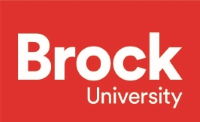Overview
The working papers within each theme are deeply researched and considered products that reveal aspects of our shared economic history and experiences across generations. With these as the backbone, the project’s principal investigator, Charles Conteh, and the Wilson Project Team have written three culminating reports that tie findings together while keeping close in mind Niagara's current and future prospects in an ever-shifting environment of trends, opportunities, and challenges.
Click the photos or captions below to read and/or download the full works.
Report #1 - The Next Frontier of Economic Development in Niagara: From Concierge to Orchestrator of Change
This report is the final part of a two-year project with a two-fold goal: first, to map the economic history and assets of the Niagara region over the past 150 years; second, to analyze the region’s current and emerging economic trends, focusing on industrial strengths and constraints against the backdrop of ever-shifting provincial, national and global trends, opportunities and challenges. These two goals, taken together, mean that the project is partly a narrative of Niagara’s socioeconomic history and partly an analysis of the region’s current and future trajectory as an economic hub and an innovation ecosystem in a changing world.
Report #2 - Changing the Narrative: Unlocking the Economic Assets of Niagara in a Changing World
This report aims to shed light on Niagara’s evolving economy by investigating the opinions of local stakeholders. Drawing on interviews with policymakers and the private sector, it explores the opportunities and challenges that face Niagara’s regional economy, and the role that policy can play in encouraging economic development. The report finds that Niagara’s economy is at a turning point, and that stakeholders are eager to tell a new story that positions the region as the place to be for emerging industries at the intersection of agriculture, tourism, and advanced manufacturing. At the same time, growth in these industries is hampered by institutional, cultural, and political barriers. The report thus concludes by providing a series of recommendations for policymakers and other stakeholders within Niagara.
Report #3 - ‘Brain Drain’ in Niagara: Evaluating STEM talent retention through a survey of post-secondary graduates
This report explores the post-graduation experience of recent graduates in Science, Technology, Engineering, and Mathematics (STEM) programs from Brock University and Niagara College. Through a survey, it aims to shed light on talent retention patterns in the Regional Municipality of Niagara. This includes whether graduates are choosing to live and work in the region following graduation, and what factors are influencing their decision. The report finds that while half of graduates continue to live in Niagara, nearly two-thirds are working in jobs outside of the region. Among those currently working outside Niagara, the critical factors in their decision to pursue employment elsewhere were job opportunity, compensation, and the perceived competitiveness of local firms. Graduates agree that more career opportunities, affordable and attainable housing, and connected public transit would help to improve the post-graduation experience of Brock University and Niagara College alumni.



